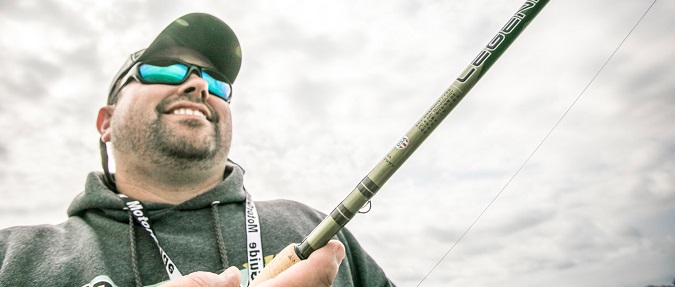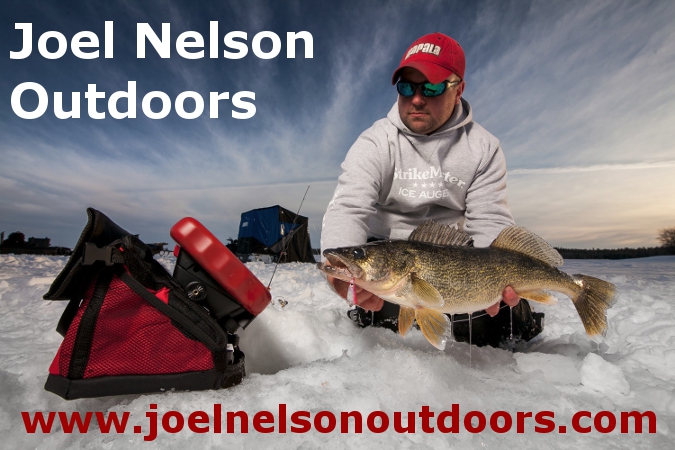
In the last article, we defined the terms “power” and “action” while discussing the benefits of specific types of each. It is difficult to walk into a sporting goods store and select the perfect rod for the job, and even tougher to take non-specific, anecdotal advice on a brand in the effort to finding your perfect stick. That is why I will offer a few popular lengths, powers, and actions along with typical applications so you can have the right tool for the job. No matter what your price point, we’ll focus on finding the right fishing rod characteristics to handle the task at hand.
It is surprising how many people select rods based on species alone, as if there were separate rods to use for bass or walleye or pike. Instead, the focus should be placed heavily on technique and the interplay between length, power, and action. Fishing rods perform best when fished with lure-types, and most importantly, lure weights, that fit the build and design of the particular rod in-hand. This places an emphasis on situation-specific rods that place an emphasis on handling a certain scenario in the fishing world. Again, you can use a screwdriver to knock out bolts, but a hammer and punch are far more effective.
Still, there are species-specific considerations, often based on tradition, that creep into rod design. Take the split-grip phenomenon for example and how prevalent it is in bass rods. Walleye anglers on the other hand, tend to lean more towards full cork handles that have typically been more commonplace. Spinning vs. casting does also offer a few changes to the mix, as each of them fish differently for different fish species, with spinning being far more common for walleye, trout, panfish, etc., and casting rods getting the nod for bass, pike, musky, salmon, and catfish.
There are far too many ways to fish for a list of all technique-specific recommendations, however, here is a few common ones that I feel will offer you a distinct advantage on the water, and get you thinking of the interplay between length, power, and action:
Pitching/Casting Jigs – Material – Carbon Fiber – Power – ML, M, Action – XF, Length 6’ 6” – 7’ – If there were ever a case where the best of the best makes a big difference, jig-fishing is where. Better blanks have lighter, faster actions that translate to more hooks in more fish. Pair common jig sizes fished to the range of weights that rod handles as listed on the blank.
Vertical Jigging – Material – Carbon Fiber – Power – ML or M, Action – XF, Length 6’ – 6’6” – Most anglers prefer the rod tip a bit closer to them when jigging over the side of the boat. Line watching and overall management is far easier, while still having enough length to keeping big fish buttoned up.
Rigging – Material – Carbon Fiber – Power – ML or M, Action – Fast or XF, Length 7’ – 8’6” – Live bait rigging involves feeling a fish before it feels you, making Fast and Extra Fast (XF) actions perfect for the task at hand. Riggers also have to manage the length of a snell boat-side as they net fish. Longer rods do a great job of keeping the fish hooked up with a bouncing sinker and long leader lengths, though sometimes at the expense of feel in a big wind. Choose accordingly.
Casting Crankbaits – Material – Carbon Fiber/Glass Blend or all Glass – Power – M – MH, Action – Moderate, Length 6’6” – 7’6” – Casting crankbaits happens for a variety of species, but the highlight of any good crankbait rod is some give in the middle section, hence the moderate action. Crankbaits notoriously pull out of fish’s mouths if the rod (or line) doesn’t have enough give to let the fish engulf it in the first place. The next key is pairing common bait sizes to the range of weights that each rod handles as listed on the blank.
Trolling Crankbaits – Material – Carbon Fiber/Glass Blend or all Glass – Power – M – MH, Action – Moderate, Length 5’ – 10’ – Again, the key component of a good crankbait trolling rod is the moderate action and give that it offers. You’ll see a very large range in lengths, and that’s because most trollers are trying to pair multiple rods at various lengths to cover the most water without tangles. For example, many trollers pair 8’-10’ rods with a set of 6’ rods to be able to troll 4 lines un-tangled.
Finesse Jigging/Drop-Shot – Material – Carbon Fiber – Power – L – ML, Action – Fast/XF, Length 6’6” – 8’6” – Fishing small baits for panfish, bass, or walleye, requires a blank matched to the weight of that specific jig. Longer rods make for further casts of small baits, so consider going as long as your rod locker has storage for and you’re comfortable with.
These recommendations are only basic guidelines, as there needs to be some wiggle-room for hard-earned experience and personal preference to inform the process. One last piece of advice is to buy the best rod you can in terms of price point, while adhering to the basic rules of length, power, and action. Especially for light-biting fish, you get what you pay for in that higher price-point rods are typically lighter, more sensitive, and help you experience a technique in the best way possible. With today’s materials and craftsmanship, you can get a good rod at a great price, but it’s not a sales pitch in saying that the net result of higher quality is more bites and more fish.

